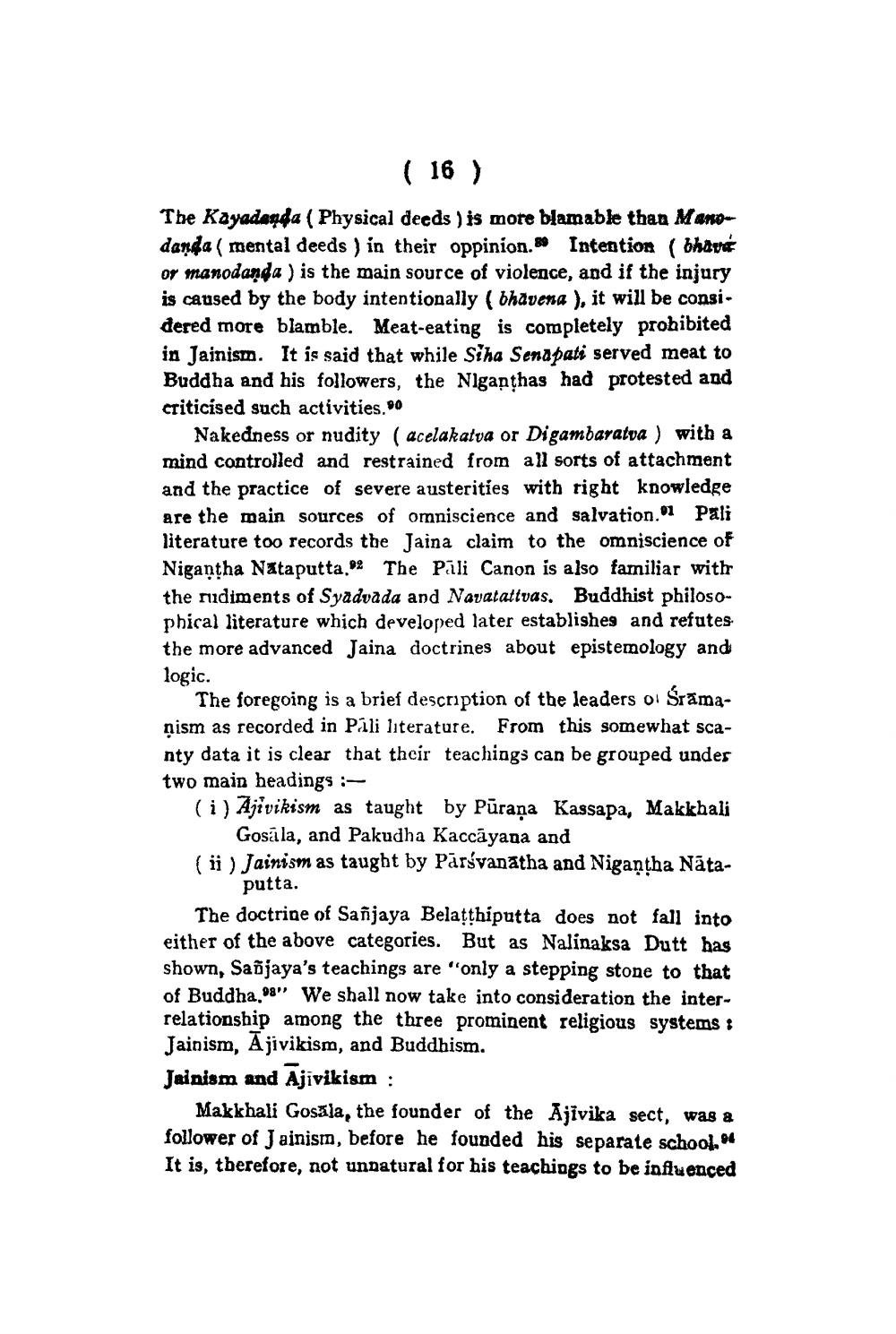________________
( 16 )
The Kayadanda ( Physical deeds) is more blamable than Manodanda (mental deeds) in their oppinion. Intention (bhavá or manodanda) is the main source of violence, and if the injury is caused by the body intentionally (bhävena ), it will be considered more blamble. Meat-eating is completely prohibited in Jainism. It is said that while Siha Senapati served meat to Buddha and his followers, the Nlganthas had protested and criticised such activities.
Nakedness or nudity (acelakatva or Digambaratva) with a mind controlled and restrained from all sorts of attachment and the practice of severe austerities with right knowledge are the main sources of omniscience and salvation."1 Pali literature too records the Jaina claim to the omniscience of Nigantha Nataputta. The Pali Canon is also familiar with the rudiments of Syadvada and Navatattvas. Buddhist philosophical literature which developed later establishes and refutes the more advanced Jaina doctrines about epistemology and logic.
The foregoing is a brief description of the leaders o Śramanism as recorded in Pali literature. From this somewhat scanty data it is clear that their teachings can be grouped under two main headings :
(i) Ajivikism as taught by Purana Kassapa, Makkhali Gosala, and Pakudha Kaccayana and
(ii) Jainism as taught by Pārsvanatha and Nigaṇṭha Nataputta.
The doctrine of Sanjaya Belaṭṭhiputta does not fall into either of the above categories. But as Nalinaksa Dutt has shown, Sanjaya's teachings are "only a stepping stone to that of Buddha.98" We shall now take into consideration the interrelationship among the three prominent religious systems : Jainism, Ajivikism, and Buddhism.
Jainism and Ajīvikism:
Makkhali Gosala, the founder of the Ajivika sect, was a follower of Jainism, before he founded his separate school.4 It is, therefore, not unnatural for his teachings to be influenced




